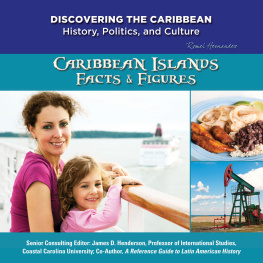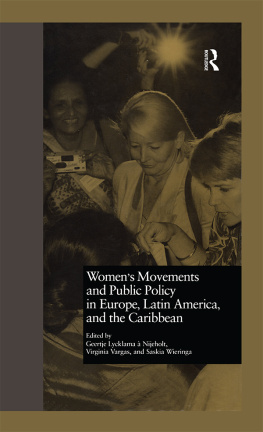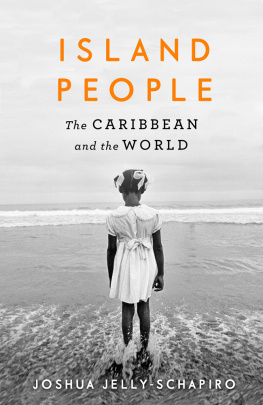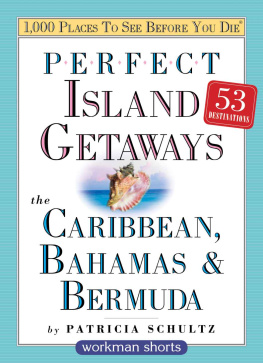RETHINKING THE ISLAND
The Rethinking the Island series seeks to unsettle assumptions by comprehensively investigating the range of topological and topographical characteristics that lie at the heart of the idea of islandness.
Series Editors
Elaine Stratford, Professor and Director, Peter Underwood Centre for Educational Attainment, University of Tasmania.
Godfrey Baldacchino, Professor of Sociology at the University of Malta, UNESCO Co-Chair in Island Studies and Sustainability.
Elizabeth McMahon, Associate Professor in the School of the Arts and Media, University of New South Wales, Australia.
Titles in the Series
Theorizing Literary Islands: The Island Trope in Contemporary Robinsonade Narratives, Ian Kinane
Island Genres, Genre Islands: Conceptualization and Representation in Popular Fiction, Ralph Crane and Lisa Fletcher
Postcolonial Nations, Islands, and Tourism: Reading Real and Imagined Spaces, Helen Kapstein
Caribbean Island Movements: Culebras Transinsularities, Carlo A. Cubero
Islands of Poetry: Exploring Imagination and Materiality, Rajeev S. Patke (forthcoming)
Published by Rowman & Littlefield International Ltd.
Unit A, Whitacre Mews, 2634 Stannary Street, London SE11 4AB
www.rowmaninternational.com
Rowman & Littlefield International Ltd. is an affiliate of Rowman & Littlefield
4501 Forbes Boulevard, Suite 200, Lanham, Maryland 20706, USA
With additional offices in Boulder, New York, Toronto (Canada), and Plymouth (UK)
www.rowman.com
Copyright 2017 Carlo A. Cubero
All rights reserved. No part of this book may be reproduced in any form or by any electronic or mechanical means, including information storage and retrieval systems, without written permission from the publisher, except by a reviewer who may quote passages in a review.
British Library Cataloguing in Publication Data
A catalogue record for this book is available from the British Library
ISBN: HB 978-1-78348-835-3
Library of Congress Cataloging-in-Publication Data Is Available
ISBN: 978-1-78348-835-3 (cloth : alk. paper)
ISBN: 978-1-78348-837-7 (electronic)

The paper used in this publication meets the minimum requirements of American National Standard for Information SciencesPermanence of Paper for Printed Library Materials, ANSI/NISO Z39.481992.
Printed in the United States of America
I have vivid memories of my first trip to Culebra. I was sixteen years old. My mother, brother and I woke up at 4 a.m. to drive from San Juan, the capital of Puerto Rico and where we lived, to Fajardo, the biggest town on the east of Puerto Rico, to catch the 9 a.m. ferry to Culebra. Culebra is one of the islands that make up the archipelago of Puerto Rico, and it is one of the two offshore municipalities of Puerto Rico. My mother had told me that the island had been used by the U.S. Navy as a military practice range for decades, and that the Navy only left Culebra after a bitter and prolonged grass-roots struggle where the islanders were successful in claiming their lands back from the military. The departure of the Navy liberated the beaches on the north coast of Culebra, which had a reputation of being among the most beautiful in the world. The only catch was that the Navy had not cleaned the areas where it bombed and a lot of the lands were still littered with unexploded ordinance and, possibly, contaminated with nuclear material. My mother and I thought it would be an interesting place to spend a weekend.
I had an impression that Culebra was among the poorest communities in Puerto Rico. This impression was informed by my expectation that its size, 30 sq. km, small population (at the time it was around two thousand; it is closer to four thousand now) and detachment from the Puerto Rican mainland (27 km east of Puerto Rico) would contribute to an isolated experience with limited access to public resources and capital. My expectation was also informed by the stories I had heard of the Navy bombings and the fact that the military had not cleared the lands it polluted.
In 1989, Culebra was featured prominently in the Puerto Rican media due to the devastation caused by Hurricane Hugo. I had experienced Hurricane Hugo in San Juan: one wall of our apartment was sucked out by the force of the winds. The electric power and water services were not back online for weeks after the storm. While San Juan only experienced the edges of the storm, Hurricane Hugos eye passed right over Culebra. The islanders experienced winds of up to 250 km per hour for over twenty hours, causing extensive damage to the entire infrastructure on the island. I remember sitting in my neighbours living room looking through the newspaper photos of Culebra as my neighbours commented how the island looked as if it had been bombed a black-and-brown landscape, nothing standing and debris scattered all over the ground. Electric power, water services and aid were slow to arrive in Culebra, accentuating the effects of the disaster. These images contributed to my impression of Culebra as a poor and isolated community, surrounded by a rough sea, still healing from the Navy bombings, administered by a Puerto Rican state insensitive to the islands needs and living on the margins. I held this image, of a somewhat victimised Culebra, alongside an expectation of resilient islanders, who have experienced horrible natural disasters and who have developed a powerful political consciousness through their struggle against the worlds largest military.
For our first visit, we stayed at a hotel on the edges of the main village that faced Ensenada Honda (Deep Cove), the inner bay of Culebra. I was struck by the amount of sailboats anchored in the bay. Where did they come from, where are they going, are they tourists or do people actually live on the boats? Thinking back on that image, I recall it must have been the first indicator for me that Culebra was not necessarily an entirely isolated island, but that, maybe, it was part of a network of sailing stops along the Leeward Islands.
My first visit to Flamenco Beach, the most popular beach on the north coast of Culebra, was a powerful experience. The visitor approaches Flamenco Beach by descending a hill, which results in an effect where the beachs white sand and crystal clear water irradiates with light and contrasts with the dark green of the foliage of the hills and the dark blue sky. Upon arrival to the beach, the brightness of the white sand is almost painful to the eyes and the water is so clear that, depending on the weather conditions, boats look as if they are floating in mid-air rather than navigating through water. I had never associated this kind of landscape with Puerto Rico. The landscape of Flamenco Beach contrasts with the brown sand and dark blue water that is common of beaches in San Juan and along the north coast of Puerto Rico. It gave Flamenco a foreign feeling to it, as if I was not in Puerto Rico. This uncanny feeling was heightened by the presence of military tanks rusting along the shores of the beach. These rusting tanks, I later learned, are part of the extensive materiel that the U.S. Navy left in Culebra after its departure. The Navys presence is also felt by fences that cordon off sections of the area due to the danger posed by bombs, mines, grenades and other unexploded ordinance.



 The paper used in this publication meets the minimum requirements of American National Standard for Information SciencesPermanence of Paper for Printed Library Materials, ANSI/NISO Z39.481992.
The paper used in this publication meets the minimum requirements of American National Standard for Information SciencesPermanence of Paper for Printed Library Materials, ANSI/NISO Z39.481992.





